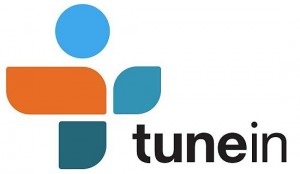Over half of Arkansas residents are living on the edge of financial disaster with almost no savings to fall back on in the event of a job loss, health crisis or other income-depleting emergency, according to a report released today by the Corporation for Enterprise Development (CFED).
The 2013 Assets & Opportunity Scorecard defines these residents as “liquid asset poor,” which means they lack adequate savings to cover basic expenses at the federal poverty level for just three months if they suffer a loss of stable income. Included in this group are a majority of Arkansas residents who live below the official income poverty line of $23,050 for a family of four, as well as many who would consider themselves middle class. Fully 40% of households earning between $41,341 and $67,008 per year have less than three months of savings ($5,762 for a family of four).
Without savings, these families have limited hope of building a more prosperous future for themselves or their children, including saving for college, buying a home or setting aside money for retirement.
“In order to cope with the recession’s continued impact, these families have had to prioritize today’s expenses over tomorrow’s goals,” said Andrea Levere, president of CFED. She called the findings “particularly disturbing given the ongoing budget talks in Congress that will likely result in further reductions in the social safety net and other programs that help low- and moderate-income people get on the their feet and start planning and saving for a better future.”
Published annually, the Assets & Opportunity Scorecard offers the most comprehensive look available at Americans’ ability to save and build wealth, fend off poverty and create a more prosperous future. The Scorecard explores how well residents are faring in the 50 states and the District of Columbia and assesses policies that are helping residents build and protect assets across five issue areas: Financial Assets & Income, Businesses & Jobs, Housing & Homeownership, Health Care and Education.
Arkansas ranks 46th in the country overall in the ability of residents to achieve financial security. The Scorecard evaluates states across 53 measures within the five different issue areas. Arkansas receives an “F” in Financial Assets & Income, due in part to Arkansans’ lack of access to the financial mainstream. Arkansas ranks 49th in unbanked households and in underbanked households – households that have a checking or savings account but still continue to rely on alternative financial services. Arkansas also has the lowest number of households with a savings account in the nation, at fewer than 50%. Arkansas also receives an “F” in Education, ranking 50th in adults with at least a two-year college degree and 49th in four-year college degrees. However, the state ranks highly on measures of housing affordability: 9th on homeowner cost burden and 12th on affordability of homes. While Arkansas has the 13th lowest foreclosure rate in the US, it ranks 42nd on delinquent mortgage loans, indicating that a significant number of homeowners are at risk of losing their homes. Also, with 45% of children enrolled in some form of pre-K, Arkansas ranks 5th on early childhood education enrollment.
“Although there are signs of improvement in Arkansas’s economy, with unemployment edging downward in recent months, this year’s Assets & Opportunity Scorecard paints a picture of a state – and a nation – that is struggling to achieve economic opportunity for all residents,” said Jennifer Brooks, director of state and local policy for CFED.
To address these challenges, the Scorecard includes a dozen policy solutions that can help Arkansas increase opportunity and promote financial well-being for all residents. To address high rates of income and asset poverty, Arkansas should promote awareness of the federal Earned Income Tax Credit to maximize income for low-wage workers and remove the disincentives for very low-income families to save by lifting asset limits in its public benefit programs. To help maintain homeownership as a route to the middle class, Arkansas should provide assistance to first-time homebuyers and funding for its state Housing Trust Fund. To improve job quality, Arkansas should increase the state minimum wage and expand federal leave laws to cover more Arkansas workers. Finally, to boost two- and four-year college degree attainment rates, which are among the worst in the country, Arkansas should expand its college savings incentives through the state 529 plan.
“We understand asset accumulation leads to greater economic mobility. Enacting policies that encourage our citizens to build assets is crucial for the economic security of Arkansas families,” said Tamika Edwards, Director of Public Policy for Southern Bancorp Community Partners (SBCP), Arkansas’s Lead State Organization in the CFED Assets & Opportunity Network. “SBCP’s direct family economic security work carries out our beliefs. We recently celebrated the milestone of reaching our 1,000th asset purchase through our Individual Development Account (IDA) Program.”
Nationally, the Scorecard data reveal the daunting reality facing far too many low- and moderate-income families as they struggle to move up the economic ladder. CFED found that 25 states saw increases in liquid asset poverty over findings reported in the 2012 Assets & Opportunity Scorecard. The report also found continuing racial gaps, with nearly 64% of households of color considered liquid asset poor compared with 34% of white households. Among the other key findings:
Many households don’t have the basic tools to save for a rainy day, with nearly a third (30.8%) lacking a savings account and 8.2% with no mainstream financial account at all.
- For the second year in a row, more than half (56.4%) of consumers have subprime credit rates, meaning they do not qualify for short-term credit at “prime” rates, making them more likely to turn to high-cost payday, auto-title or installment loans.
- Two out of every three college graduates is leaving school with student loan debt, the average amount of which increased by $552.98 over last year’s Scorecard findings to $26,600.
- By the second quarter of 2012, the foreclosure rate had dropped to 4.27% – a decrease from a 2010 high of 4.6% but still above the pre-housing crash rate of 0.99% in 2006. The move by financial institutions to stop offering high-cost mortgages has been a mixed blessing for asset poor families. On the up side, they are no longer prey to abusive and unscrupulous lenders. On the down side, they are largely shut out of the mortgage market.
To read an analysis of key findings from the 2013 Assets & Opportunity Scorecard, click here. To access the complete Scorecard, visit http://assetsandopportunity.org/scorecard






